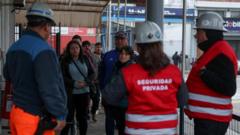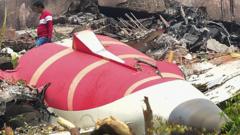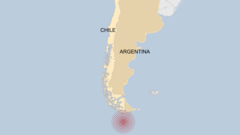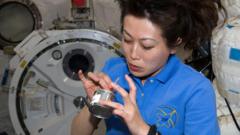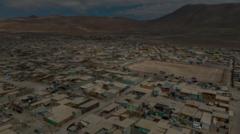The Vera C. Rubin Observatory's pioneering capabilities promise profound insights into the universe, including the search for elusive dark matter and monitoring potential cosmic threats.
**Vera Rubin Telescope Unveils Groundbreaking Celestial Imagery**
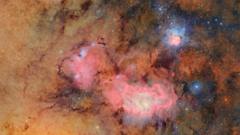
**Vera Rubin Telescope Unveils Groundbreaking Celestial Imagery**
The revolutionary telescope in Chile releases its first breathtaking astronomical images, marking a new era in cosmic exploration.
In an astonishing development, the Vera C. Rubin Observatory in Chile has unveiled its inaugural images, showcasing cosmic marvels that were previously hidden in the darkness of space. One of the first captures exhibits the vibrant gas and dust clouds of the Trifid and Lagoon nebulae, located approximately 9,000 light years from Earth. This sophisticated telescope, equipped with the world's most powerful digital camera, is set to reshape our comprehension of the cosmos.
The groundbreaking facility promises to detect new planetary bodies within our solar system, potentially expanding our known inventory by tenfold. It is also designed to identify hazardous asteroids on a collision course with Earth and delve deep into understanding dark matter—an enigmatic component constituting much of our universe.
Reflecting on this milestone, Professor Catherine Heymans, Astronomer Royal for Scotland, noted the culmination of 25 years of effort to create such a revolutionary site dedicated to astronomical surveys. As a vital partner in the project, the UK anticipates hosting data centers to process the vast amounts of information gathered over a decade-long observational initiative covering the southern night sky.
Nestled atop Cerro Pachón in the Andes, the observatory benefits from a perfect location characterized by high altitude, arid conditions, and minimal light pollution, essential for capturing clear astronomical images. The observatory's strict measures to maintain darkness—including careful management of lighting during vehicle transport—are crucial to preserving the integrity of the data collected.
With a formidable 3,200-megapixel camera developed by the US Department of Energy’s SLAC National Accelerator Laboratory, the telescope employs a unique three-mirror design to achieve remarkable clarity and sensitivity. It can discern faint signals from the far reaches of galaxies, potentially illuminating events from billions of years past.
The Legacy Survey of Space and Time, which is set to commence, will allow the observatory to image the night sky every 40 seconds for up to 12 hours each night over its ten-year mission. Scientists project that the telescope will be capable of capturing a staggering 10 million alerts nightly, focusing on four distinct research areas: monitoring celestial changes, understanding the Milky Way's formation, cataloging solar system objects, and unraveling the mysteries of dark matter.
Besides its transformative capabilities, the telescope's continuous observational approach could provide early warnings about hazardous objects like asteroids. Anticipated findings might further the exploration of the hypothesized Planet Nine, a theoretical body that may reside far beyond known solar system boundaries.
Experts, including Professor Alis Deason from Durham University, highlight that the depth of data attainable through the Vera Rubin Observatory could drastically enhance humanity's grasp of the Milky Way's structure, potentially tracking celestial phenomena up to 1.2 million light years away.
As scientists gear up to interpret this influx of astronomical information, excitement grows in anticipation of uncovering answers to age-old cosmic questions while safeguarding our planet's future at the same time.

